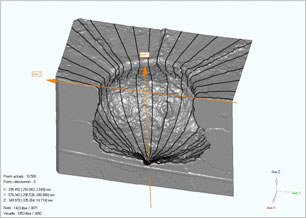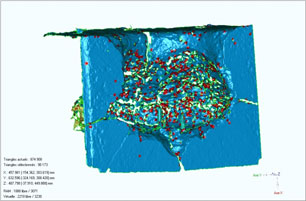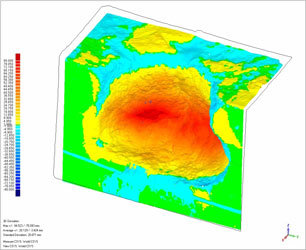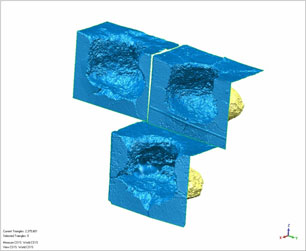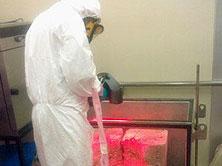
With the goal of controlling or even preventing accidents with nuclear reactors, a French laboratory is conducting simulations of the various potential risks that could result from a malfunction at a nuclear plant. One such risk is a nuclear meltdown. When this occurs, the nuclear fuel rods overheat and melt inside the reactor, creating a flow of corium (lava-like mixture of molten parts of the reactor core). Corium forms at an extremely high heat (3000°C) and is chemically aggressive and radioactive. It is therefore crucial to understand how corium affects the concrete of the reactor containment chamber.
A European study was launched to conduct experiments to recreate corium in order to analyze its effects on different types of concrete. Researchers then analyzed the temperatures recorded during the experiment as well as the shape of the concrete test specimen to assess the extent of the damage caused to the concrete by the corium.
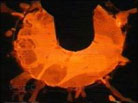 While it would have been possible to measure the concrete blocks manually, 3D digitizing was a compelling option because it facilitated analysis and provided more precise data. The actual digitizing process took only a few minutes, and the volume and dimensional measurements obtained were much better than those obtained through manual measurement.
While it would have been possible to measure the concrete blocks manually, 3D digitizing was a compelling option because it facilitated analysis and provided more precise data. The actual digitizing process took only a few minutes, and the volume and dimensional measurements obtained were much better than those obtained through manual measurement.
Researchers therefore decided to use a Creaform Handyscan 3D portable laser scanner. Only trained lab employees were qualified to go near the concrete blocks, which, though decontaminated, could still pose a threat of radiation contamination.
The first job for Creaform’s application specialists was to teach certified laboratory staff how to use the Handyscan 3D. Because this is a simple and user-friendly scanner, it only took the staff half a day to master this new technology, which shortened the preparation time needed for the operation.


Creaform teams then processed the 3D data according to the researchers’ instructions to generate critical sections showing the links between the shape and temperature recorded. The 3D model also made it possible to recalculate the volume of the cavity before and after the experiment with a high degree of precision and demonstrate the relationship between the amount of corium, which the researchers knew, and the quantity of concrete destroyed.
